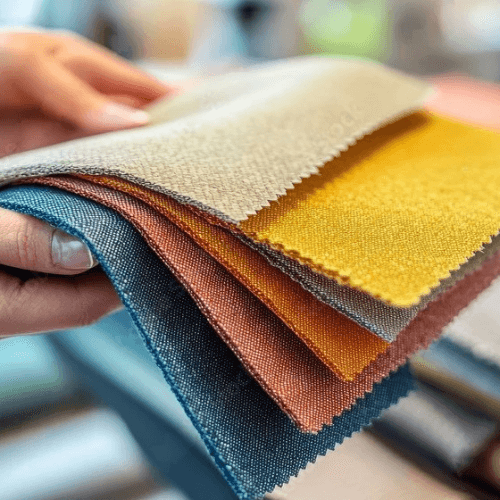Building Strong Relationships with Fabric Suppliers: Essential Strategies for Success

In the competitive textile industry, building strong relationships with fabric suppliers is crucial for ensuring a reliable supply chain, maintaining product quality, and fostering long-term business success. A solid partnership can lead to better pricing, priority access to new materials, and tailored services that enhance your business operations. This blog outlines effective strategies for cultivating and strengthening these vital partnerships.
### 1. **Establish Clear Communication**
Effective communication is the foundation of any successful supplier relationship. Here’s how to ensure clarity and openness:
– **Regular Updates:** Keep suppliers informed about your needs, production schedules, and any changes in demand. Regular communication helps prevent misunderstandings and aligns expectations.
– **Feedback Mechanisms:** Provide constructive feedback on their products and services. Acknowledge their efforts and address any issues promptly to foster a collaborative environment.
– **Use Multiple Channels:** Utilize various communication methods—emails for detailed discussions, phone calls for urgent matters, and video conferences for face-to-face interactions when possible. This flexibility accommodates different preferences and time zones.
### 2. **Be Transparent and Honest**
Transparency builds trust between you and your suppliers:
– **Share Your Vision:** Clearly communicate your business goals, values, and expectations. This helps suppliers understand how they can best support your objectives.
– **Set Realistic Expectations:** Avoid making unrealistic demands or promises. Being honest about your capabilities and limitations fosters mutual respect.
### 3. **Negotiate Fairly**
Negotiation is a crucial aspect of supplier relationships:
– **Fair Pricing:** While it’s important to negotiate prices, avoid pushing for unsustainable discounts that could jeopardize the supplier’s business. A fair pricing strategy reflects respect for their work and encourages loyalty.
– **Define Roles and Responsibilities:** Clearly outline what you expect from your suppliers and what they can expect from you. This clarity helps prevent conflicts down the line.
### 4. **Timely Payments**
Financial reliability is key to maintaining strong supplier relationships:
– **Pay on Time:** Ensure that payments are made promptly as agreed upon in contracts. Timely payments demonstrate professionalism and commitment to the partnership.
– **Discuss Payment Terms Upfront:** Be clear about payment terms during negotiations to avoid confusion later on.
### 5. **Invest in Relationship Building**
Taking the time to nurture your supplier relationships can yield significant benefits:
– **Visit Suppliers:** If possible, visit your suppliers’ facilities to gain insight into their operations and build rapport. Face-to-face interactions can strengthen relationships considerably.
– **Celebrate Milestones Together:** Acknowledge important milestones or achievements in your partnership, such as successful product launches or anniversaries.
### 6. **Collaborate on Product Development**
Involving suppliers in the product development process can lead to innovative solutions:
– **Seek Input on Designs:** Encourage suppliers to share their expertise regarding fabric performance or production techniques. Their insights can enhance product quality and reduce costs.
– **Joint Problem Solving:** When challenges arise, work together to find solutions rather than placing blame. Collaborative problem-solving fosters a sense of partnership.
### 7. **Show Appreciation**
Recognizing your suppliers’ contributions can go a long way in building loyalty:
– **Acknowledge Efforts:** Regularly express gratitude for their hard work, especially during busy seasons or when they go above and beyond.
– **Promote Their Work:** If appropriate, highlight your suppliers in marketing materials or social media posts to showcase the partnership publicly.
### 8. **Stay Informed About Industry Trends**
Keeping abreast of industry developments can enhance your collaboration with suppliers:
– **Share Market Insights:** Discuss trends that may affect fabric sourcing or consumer preferences with your suppliers. This collaborative approach can lead to better decision-making for both parties.
– **Encourage Innovation:** Foster an environment where both you and your suppliers can explore new materials or technologies together, keeping the partnership dynamic and forward-thinking.
### Conclusion
Building strong relationships with fabric suppliers requires intentional effort, clear communication, fairness in negotiations, timely payments, and mutual respect. By implementing these strategies—establishing clear communication channels, being transparent about expectations, negotiating fairly, making timely payments, investing in relationship-building activities, collaborating on product development, showing appreciation for their efforts, and staying informed about industry trends—you can create lasting partnerships that enhance your supply chain’s reliability while contributing positively to your business’s overall success in the competitive textile market.
Strong supplier relationships not only ensure consistent quality but also open doors for collaboration, innovation, and growth in the ever-evolving landscape of fabric sourcing. By nurturing these partnerships, you position your business for long-term success while fostering an environment of trust and collaboration that benefits all parties involved.






